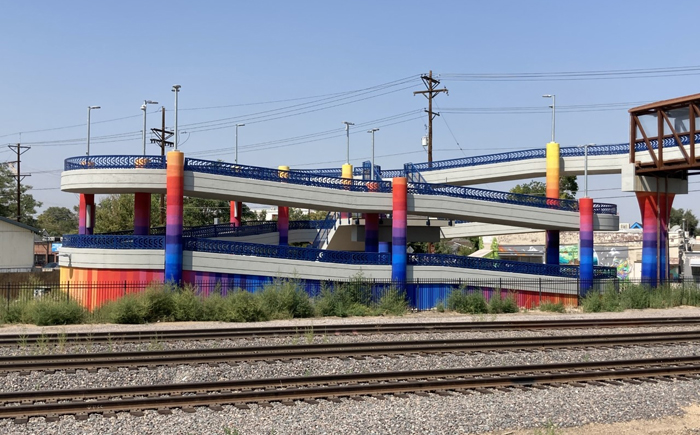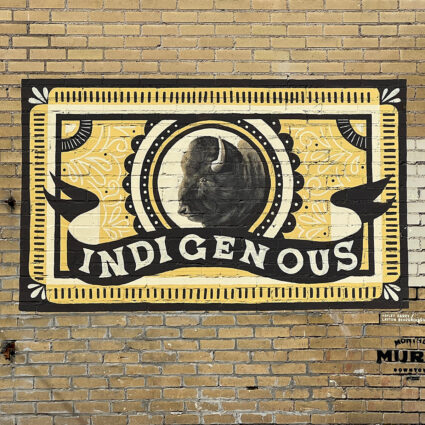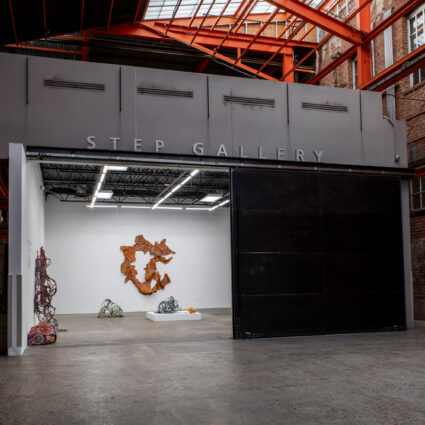The serape-style murals and public-art pieces of Birdseed Collective co-founder Anthony Garcia Sr. are integral to Denver’s urban infrastructure.
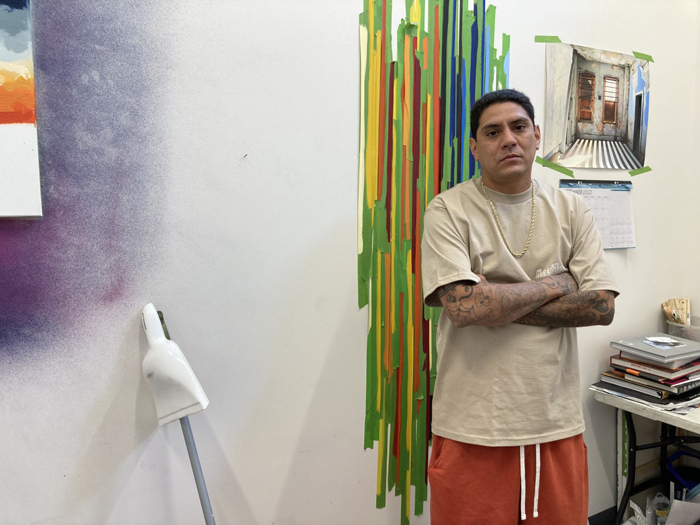
Anthony Garcia Sr. has literally made his mark upon the urban infrastructure of Denver. A prolific muralist, his artwork can be seen on, in, and around various buildings, bridges, and walls throughout the city.
Garcia has metaphorically made his mark on the city’s art scene as well. He is a former RedLine Contemporary Art Center resident, the 2022 Bonfils Stanton Fellow, and co-founder of Birdseed Collective. Recently, the Arvada Center hosted his solo exhibition Pigment, featuring a large body of his in-studio work.
His transformation into a visually ubiquitous muralist and successful fine artist began years ago in Denver’s near north neighborhood of Globeville.
“I’ve always seen myself as an artist, [but] our exposure to art in the hood was very minimal,” says Garcia from his Five Points studio. He recalls that he “was attracted to graffiti early on [and] starting doing it to get my name out there.” But he sought to “evolve from tagging” so as to work on bigger walls and expand his aesthetic horizons.
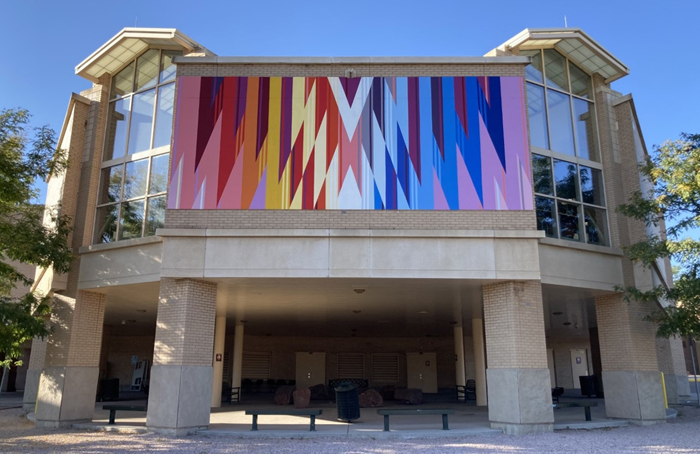
Soon thereafter, his mother enrolled him in small, summertime internships focused on public art projects with older, more established Denver artists such as Arlette Lucero and the late Robert Luna. “My mom has always been very instrumental in what I do,” says Garcia, who adds that during his formative years, his mom “plugged me into these programs… and I ended up developing a name for myself.”
During his mid-twenties, Garcia became a father to his first son, which drove him to create something more sustainable in the art world. In 2009, Garcia, along with artist friends Michael Broberg and Robin Walker, founded Birdseed Collective, a nonprofit community outreach organization that’s devoted to improving Denver’s socioeconomic conditions through arts and humanities programming.
“We started doing these small art shows here and there. Little concerts. Fashion shows. Soon they really started catching fire,” says Garcia. As the collective developed, the organization, which attained nonprofit status in 2015, directed their efforts toward mural-based artworks and social programs that focus on youth outreach and food distribution.
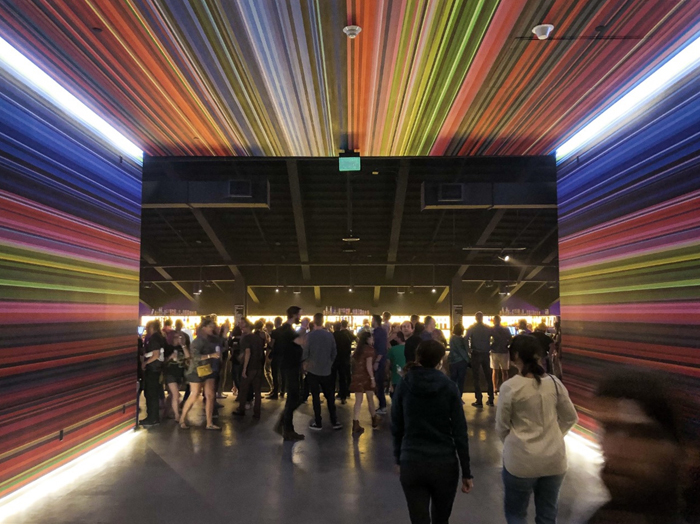
While the artist dedicated much of his time, energy, and resources into supporting and uplifting his local community, he also honed his own aesthetic and artistic practice. When speaking of his own work, Garcia references the “bright colors and gestural movements” he learned from his early days in the graffiti scene. But he also adds that “light is a big factor in my work,” featuring fractal patterns and colors based on the “full spectrum” of light. Additionally, he takes formal inspiration from such things as jewels, glass, and sediment.
But the most dominant and iconic source of inspiration in Garcia’s work is, undoubtedly, the serape, which is a long, brightly colored blanket of Mexican origin that is sometimes worn as a cloak. While traditionally patterned as a series of colorful, horizontal bars, the textile can also contain Aztec designs—such as jagged star formations—embedded within the stripes.
“The blanket has always been a very nostalgic [object] for me,” Garcia says. “Once I embraced the serape style, a lot of other people started gravitating toward [my work].” But far from slavish adherence to a set pattern, Garcia looks to “redefine [the serape style] and make it more abstract. To deconstruct it and turn it into my own thing.” To that extent, he experiments with various colors and shapes that both reveal and obscure his inspiration and source material.
But even as he discusses the aesthetics and inspiration for his murals, he’s quick to reassert his underlying motives with regard to the arts. “It’s not so much about the mural as it is making lasting relationships. When I paint these pieces, it’s more about connecting with the neighborhood,” he explains.
“Even though I’m [at a mural site] to paint a specific project, I try to learn about the people… or local businesses that are struggling. That way we can help them out” with various resources offered by the community engagement programs Birdseed Collective oversees.
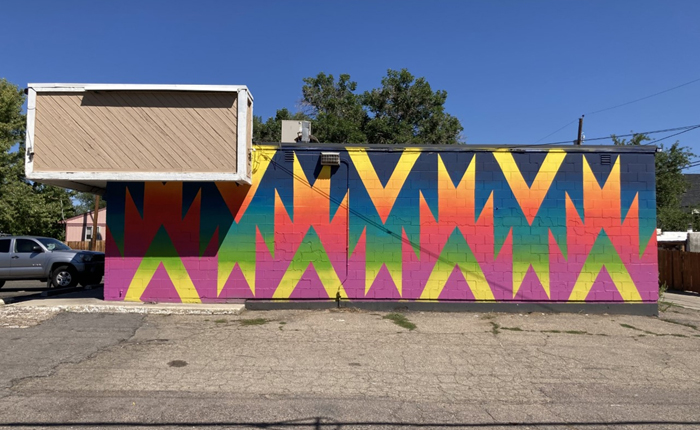
Garcia’s work can be found throughout Denver, but there are five pieces that are distinctive or important to his career as an artist.
The Cross Roads, located at the 6th Avenue and Federal Boulevard overpass, consists of four bridge-based turrets painted in Garcia’s serape style with cut-bronze overlays shaped into an Aztec pattern. The bronze cutouts are backlit with solar powered LEDs. In addition to acting as an aesthetic welcome to travelers entering Denver from the west, it was Garcia’s first large-scale public project with the City of Denver.
Sunrise can be viewed from Speer Boulevard on the north-facing side of West High School in the Lincoln Park neighborhood. LIFEWTR, a bottled-water company that also helps nationwide communities engage in public-art projects, commissioned Garcia to create murals for three local high schools during the pandemic. For this piece, Garcia experimented with a different color palette, incorporating pink hues and pastels in order to mimic morning sunlight.
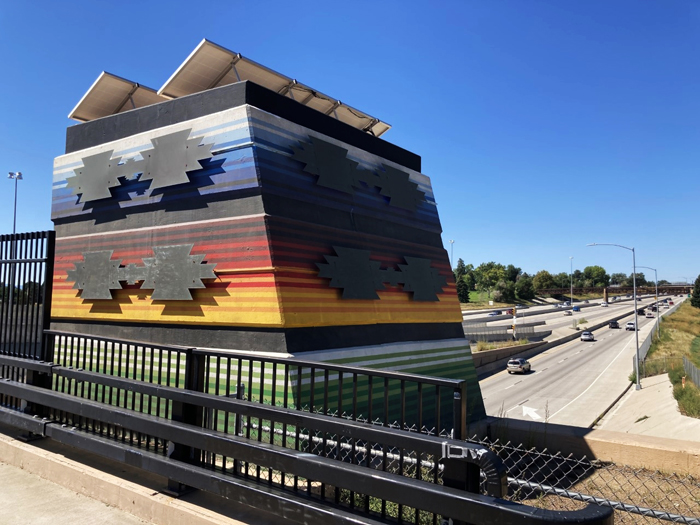
Garcia’s Vortex covers the entire entryway to the performance space in Mission Ballroom, a relatively new concert venue in Denver’s RiNo Art District. Garcia implemented his serape style but in such a way that the design resembles the warp/light speed aesthetic often found in science fiction films. The effect of this technique pulls the viewer into the bowels of the performance space.
One of Garcia’s most recent and largest public art projects, Floating Bridge, is located on the pedestrian bridge at 47th Avenue and York Street in northeast Denver. The bridge crosses the railroad tracks and connects the Elyria and Swansea neighborhoods, and is quite close to the Globeville neighborhood in which the artist grew up.
Finally, at the corner of 10th Avenue and Knox Court, one can view the mural Mini Mart. It employs an Aztec pattern painted in a fluorescent, almost psychedelic color palette. The piece is located at the site of his first public-facing mural (created in collaboration with Thomas Evans) on the south-facing wall of a convenience store. Garcia recently repainted this new mural after someone tagged the original piece and it fell into disrepair.
As for the future, Garcia looks forward to pursuing commissions away from his hometown. “If I can travel out of state, people will see that I represent Denver… and [realize] we have things going” in the city and art community.
